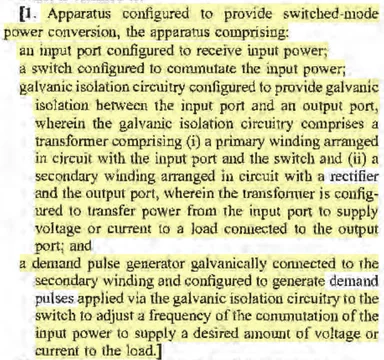
Most patent litigators know that the reverse doctrine of equivalents exists, and provides a way to argue non-infringement even if an accused product meets the literal terms of a claim. But it tends to be one of those issues that floats around in the ether, waiting for the right case, and it is rarely applied in practice.
Judge Connolly had an occasion last week to address the issue, resolving a motion for summary judgment of no reverse DOE, and took the opportunity to dig into some of the history of the reverse doctrine of equivalents. He first quoted the Federal Circuit's description of what the doctrine is:
the reverse doctrine of equivalents . . . raises a fact question, determinable on inquiry into whether a product has been so far changed in principle that it performs the same or similar function in a substantially different way.
Stueben Foods, Inc. v. Shibuya Hoppmann Corp., C.A. No. 19-2181-CFC-CJB (D. Del. Oct. 13, 2021) (quoting SRI International v. Matsushita Electrical Corp. of America, 775 F.2d 1107, 1124 (Fed. Cir. 1985)).
He went on to point out that the name of the doctrine is not quite correct, given that it is really just an application of the regular doctrine of equivalents—it's just applied to the accused infringer rather than the patent holder:
Both parties refer to the doctrine in their briefing as the “reverse doctrine of equivalents” because it is Defendants who have invoked the doctrine. The Supreme Court, however, has never adopted that term. On the contrary, the Supreme Court made clear in Graver Tank & Manufacturing Co. v. Linde Air Products Co., 339 U.S. 605 (1950), that the doctrine of equivalents applies equally to plaintiffs and defendants in a patent infringement case. . . . Because the doctrine of equivalents applies equally to the patentee and the accused infringer, “reverse doctrine of equivalents” is really a misnomer. But for ease of reference, I will follow the parties’ lead and use the term here.
Judge Connolly denied summary judgment of no DOE, citing issues of fact. He readily rejected arguments that the motion should be granted because the reverse doctrine of equivalents is "rarely applied," and that it is really claim construction in disguise (noting that all DOE arguments—regular or reverse–"necessarily require[] consideration of claim construction issues").
All in all this is a good reminder that reverse DOE remains out there as a viable defense to infringement. In fact, if you think about it, it's odd that patent defendants are often willing to pursue what are often long-shot defenses like unjust enrichment and inequitable conduct, while leaving aside a straightforward (if still difficult to prove) issue like reverse DOE.
How Does Reverse DOE Fit in with the Other DOE-Related Doctrines?
Another DOE-related doctrine that is (or was) only infrequently asserted is ensnarement, i.e., the idea that “[a] doctrine of equivalents theory cannot be asserted if it will encompass or ‘ensnare’ the prior art.” Jang v. Bos. Sci. Corp., 872 F.3d 1275, 1285 (Fed. Cir. 2017). It seems to me that ensnarement has received a bit more play than reverse DOE over recent years.
There is also prosecution history estoppel, which "bars a patentee from asserting a scope of equivalency surrendered during prosecution." Depuy Spine, Inc. v. Medtronic Sofamor Danek, Inc., 567 F.3d 1314, 1323 (Fed. Cir. 2009).
Of course, both ensnarement and prosecution history estoppel are defenses only come into play after a patentee asserts infringement under the doctrine of equivalents, which sometimes happens until later in the case.
Reverse DOE, on the other hand, is a defense to literal infringement, and is one of only a limited number of such defenses that are available. Yet it still does not come up all that often. I have to wonder if we'll eventually see a resurgence of reverse DOE.
If you enjoyed this post, consider subscribing to receive free e-mail updates about new posts.




